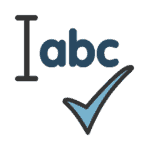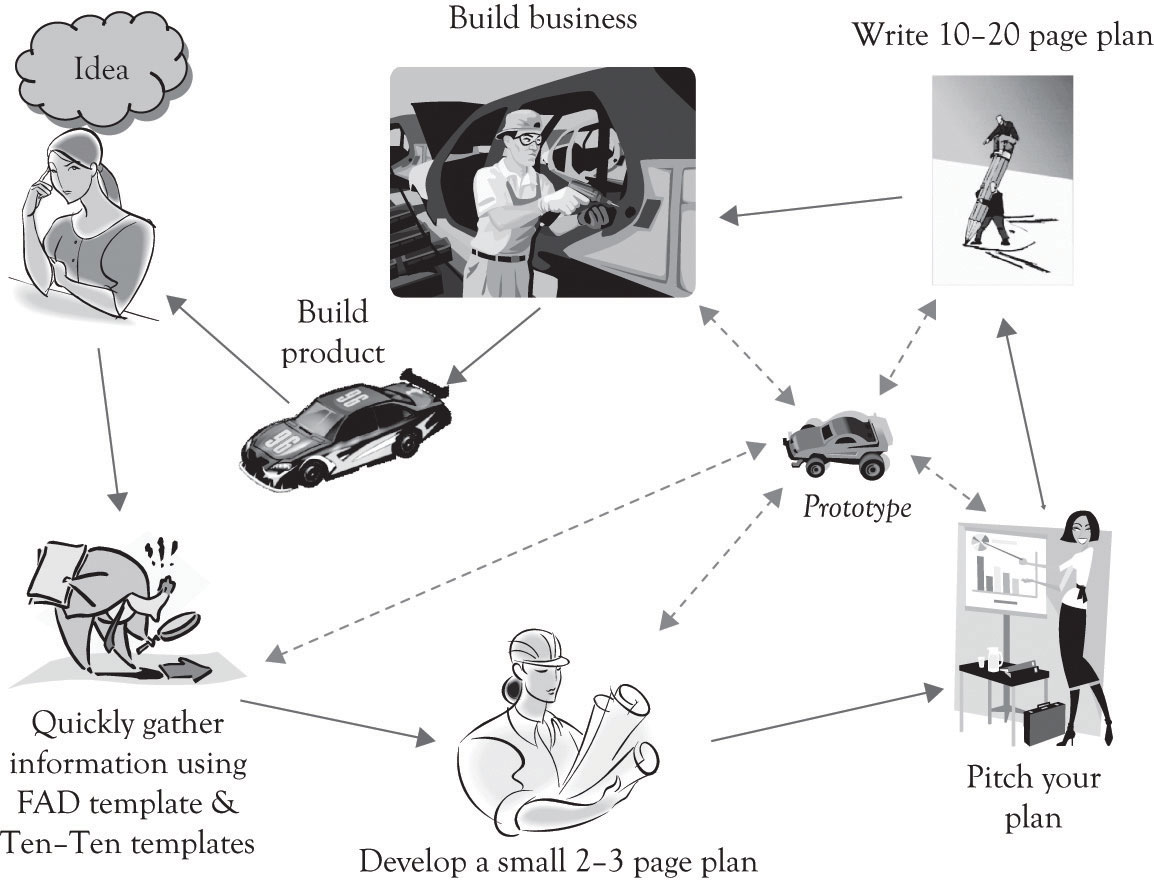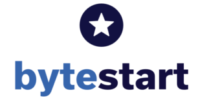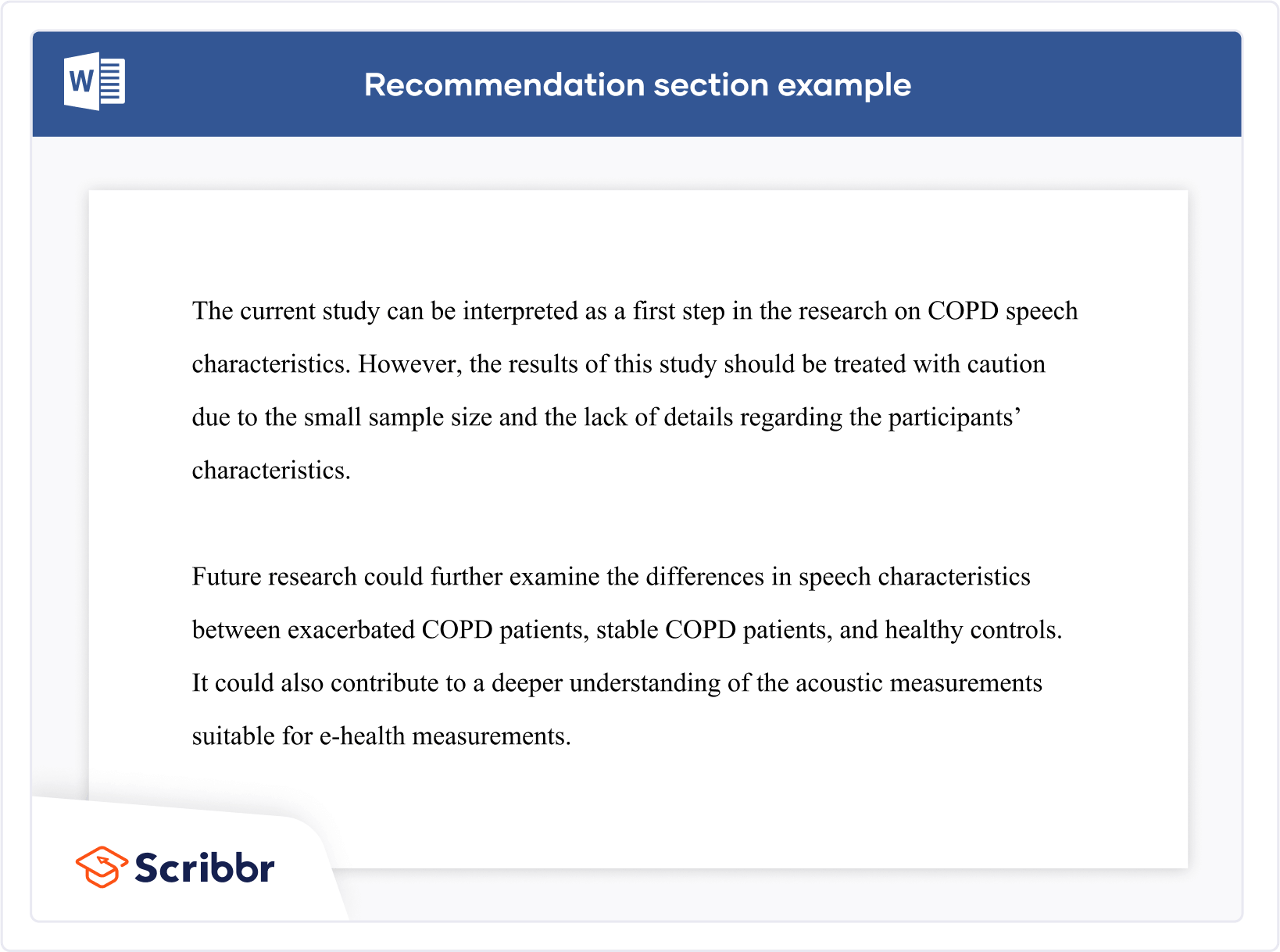

Business Plan Conclusion: Summary & Recap

You’ve written your business plan, but now you want to wrap it up to make a lasting impact on your reader. In this article, we will define the conclusion to a business plan as well as provide some tips to help you attract and seal the deal with potential investors and lenders.
What is a Business Plan Conclusion?
This business plan conclusion is a concise summary and recap of all of the components of a business plan , but especially the executive summary. It summarizes your business plan in 2-3 paragraphs, with an emphasis on the most important points.
Download our Ultimate Business Plan Template here
Is the Business Conclusion Necessary?
It’s good practice for business plans, but not always necessary to be successful in obtaining funding.
If you have a stellar executive summary, it may be unnecessary.
If the business conclusion is written well enough, it can serve as an executive summary of sorts – a short recap that provides more detail than the business plan as a whole, but only includes the most important points. It could also serve as an executive summary that is more concise than an actual executive summary.
How To Write a Conclusion for Your Business Plan
The conclusion of your business plan is the last thing people read before deciding to invest in you and your business, so it needs to make a lasting impression.
Determine Location

Depending on your intended audience, there are two common places for the conclusion. If your plan is meant for internal purposes, you may have the conclusion at the end of the entire document. However, if you are seeking funds from investors, you want to place the conclusion at the end of the Executive Summary, increasing the chances that it is actually read.
Review & Concisely Recap

Finish Your Business Plan Today!
Startups might include the following information:.
- Funding requirements
- Service or benefit to the investor
- Target market and audience
- How products or services solve the target market’s problem
- Marketing strategy
- Competitive advantage
- Management team experience
- Financial projections
- Launch plan
Established businesses might include information in their conclusions such as:
- Mission statement
- Company’s history
- Products and/or services
- Historical growth data
- Financial summary
- Company’s goals
Summarize the 3-5 points in a couple of paragraphs. You don’t need to summarize everything that happened in your business plan, just the most important points of the business plan.
Support Your Claims with Stats and/or Visuals

Establish a Call-To-Action (CTA)

Proofread & Spell-Check

The conclusion needs to give your readers a sense of closure by wrapping up all loose ends while making your last pitch effort to obtain the money your business may need.
Business Plan Conclusion Example
Use this conclusion example to help you with how to end a business plan, but keep in mind to make it relevant to your target audience, industry, and funding requirements:
Expanding into the Seattle metro area will allow Skyridge to provide its cutting-edge technology to more people who need it. Purchasing the fabrication plant in Seattle allows us to produce all of our products in-house and in one location, delivering them promptly and efficiently to the northwestern region.
We have the power to change the way people use technology, and we want [Investor’s Name] to be a part of it. By investing in Skyridge’s growth, [Investor’s Name] will benefit in the following ways:
- Inclusion with a startup that has seen XXX% growth over the past X years and our company’s management team with XX years of experience in the technology industry
- Contribution to Seattle’s economic growth and its citizens’ access to technology that enhances their lives
- Participation in company planning meetings and receive an XX% share in all profits earned
We can add to the number of lives Skyridge’s technologies impact, generate more job opportunities in the region, and alter the technology sector if we work together. If you agree with our vision for a better future for everyone, join us.
How to Finish Your Business Plan in 1 Day!
Don’t you wish there was a faster, easier way to finish your business plan?
With Growthink’s Ultimate Business Plan Template you can finish your plan in just 8 hours or less!
Related Articles To Help You Write a Business Plan
- How to Write an Executive Summary
- How to Expertly Write the Company Description in Your Business Plan
- How to Write the Market Analysis Section of a Business Plan
- The Customer Analysis Section of Your Business Plan
- Completing the Competitive Analysis Section of Your Business Plan
- How to Write the Management Team Section of a Business Plan + Examples
- Financial Assumptions and Your Business Plan
- How to Create Financial Projections for Your Business Plan
- Everything You Need to Know about the Business Plan Appendix
Other Helpful Business Plan Articles & Templates


Writing an Effective Business Plan Conclusion: Tips & Examples
Do you need help concluding the business plan that you have worked so hard to create? A well-crafted business plan conclusion is essential for setting the tone for the entire document, and summarizing the key points that justify why the business will be successful. In this article, we will explore how to write an effective business plan conclusion that will ensure that your plan is read and taken seriously.
How to End a Business Plan?
The conclusion of your business plan should briefly summarize the main points of your argument. It should state why you believe your business will succeed and explain how you intend to achieve your goals. A business plan conclusion should cover the opportunity, highlight the strengths of your plan, summarize your vision, and remind the reader why your business is in a unique position to succeed.
A template example of a solid business plan conclusion follows:
- Opportunity: Explain the opportunity that your business is capitalizing on and why it is attractive.
- Key Strengths: Highlight the key strengths of your plan, such as your competitive advantage and any unique selling points.
- Vision: Summarize your vision for the business and its future.
- Unique Position: Remind the reader why your business is in a unique position to succeed.
It is important to keep your business plan conclusion succinct and to the point. It should be no longer than a few paragraphs, and should be a clear and concise summary of the entire document.
At Atlantabusinesses.com, we understand how important it is to have a clear and effective business plan conclusion. We are experts in the field of business brokering, and we can help you through the entire process of buying or selling a business. Visit our website for more information, and for answers to all your questions about selling a business and about business brokers.
What is the final stage of the business plan?
Conclude your business plan with a presentation for obtaining funding, and provide any relevant data, graphs, and charts to back it up. Make it explicit how much money you are asking for from investors—whether it is equity, a collaboration, or a loan.
What is the appropriate way to conclude a business plan letter?
What should be included in the concluding section of a business plan.
It should also include a description of the problems you are trying to solve, a review of your marketing strategy, and an assessment of the financials. The best way to write an executive summary is to write it after you have a thorough understanding of your entire plan and can succinctly summarize it. The executive summary should include your company’s mission statement, a description of the products and services you offer or plan to offer, an overview of the problems you are aiming to solve, an assessment of your marketing strategy and an overview of the financials.
Share This Story, Choose Your Platform!
Related posts.

Unlock the Benefits of Using a Business Broker

Should I Use a Broker to Sell My Business? An In-Depth Look.

A Step-by-Step Guide to Starting a Business Loan Broker Business

Do You Need a License to Be a Business Broker? Find Out Here!
support your career
get the interview & get the job
- Professional Development
How To Write the Conclusion of a Business Plan
Your business plan’s conclusion should encapsulate your overall justification for why your venture will succeed in order to draw investors or motivate your staff. Additionally, it ought to give a short future outlook outlining your goals for development and growth. The conclusion should also restate your company’s key selling points and leave readers with a favorable impression.
How to write a business plan conclusion
When writing a business plan’s conclusion, adhere to these guidelines:
1. Decide where you want it to be
Choose whether you want the executive summary or the entire document to contain your business plan’s conclusion. Consider placing the conclusion at the end of the executive summary if you are writing a business plan to attract investors or raise money. The executive summary introduces the key points of the business plan and outlines the company’s funding requirements and conditions. It can be more persuasive to potential investors to place the conclusion at the end of this summary, and it also increases the likelihood that it will be read.
You might select a more conventional location for your conclusion at the end of the document if you are writing a business plan for an established company to track progress or provide information to a third party. In this case, your conclusion should review and highlight the company’s advantages.
2. Include the right information
Depending on whether your business is a startup looking to raise capital or an established organization evaluating goals, the information you include in your business plan conclusion will vary. New companies trying to get funding might include:
Established businesses might include information in their conclusions such as:
Not all conclusions need all these details. The most crucial information for the purpose of your business plan should be included, but the conclusion should be brief. When selecting what to include in your conclusion, keep your audience in mind. Focus on the value your company provides to investors, for instance, and the reasons why this opportunity is special. Focus on company leadership’s experience and ways to lower the lender’s risk when applying for a business loan.
3. Add facts and statistics
Facts, figures, and statistics should be used to support the conclusions in your business plan. Investors want evidence that your business can succeed and that they will see a return on their investment. Include details like your track record of expanding this or other businesses, or the information you used to calculate how much funding you need. This information is more convincing than assumptions or vague statements.
4. Maintain a positive tone
Your business plan’s conclusion should be formal and upbeat in nature. You want to convey your optimism and enthusiasm for the company’s success so that the reader will feel motivated or enthusiastic to support the business. Use language that is assertive and active and conveys your confidence in the business.
5. Include a call to action
At the conclusion of your essay, include a brief call to action that instructs the reader on what to do next. The reader should be motivated to support the business’s objectives in the manner you desire. You might conclude by saying something like, “Invest in the success of Harper Corps by joining us as a minority partner in WinTec Enterprises.” In your call to action, use action words and emphasize how the reader will benefit from taking that action.
6. Review your conclusion
Make sure your business plan’s conclusion is written with proper spelling, grammar, and punctuation by reading it after you’ve finished. You want it to flow naturally and be both concise and clear. Ask a friend or coworker who is not familiar with the objectives of your company to read it as well. Ask them if they have any questions about the book’s conclusion and whether reading it has piqued their interest or excitement. Then make improvements as needed.
What is a business plan conclusion?
The goal of a business plan conclusion is to persuade the reader of the company’s success by summarizing the plan’s advantages. The conclusion should highlight how the organization makes money and why it is a good investment because businesses typically produce business plans in order to obtain funding or investors. Businesses also create business plans to evaluate their performance or set new objectives.
In a business plan, the conclusion can be found at the end of the whole thing or at the end of the executive summary. The executive summary, which appears at the start of the business plan, provides an overview of what the reader can expect to learn and persuades them to continue reading. Some people conflate the executive summary and the conclusion, but there are several significant differences between the two.
Every business, whether new or established, should have a business plan with a succinct and focused conclusion.
Business plan conclusion example
Use this sample business plan conclusion as a model for your own plan’s conclusion, being sure to customize it to your target audience’s needs and requirements:
Expanding Bridgewater & Co. Our already prosperous company will be able to provide cutting-edge health technologies to more people who need them thanks to its expansion into the Denver metropolitan area. Buying this manufacturing facility in Denver gives us the chance to produce all of our goods internally and in a single location and ship them out quickly and effectively to the area. We want Sixty-Seven Investors to be a part of this exciting revolution because we have the unique ability to change lives. Investing in Bridgewater & Co. s expansion benefits Sixty-Seven Investors by:
We can save more lives if we work together, Bridgewater & Co. Products change, add to the community’s employment opportunities, and revolutionize the health technology sector. Invest with us if you share our vision for a more prosperous and healthy future.
Business Plan Writer Explains How to Write a Business Plan: Part 8 The Conclusion
How do you conclude a business plan presentation?
Conclusion. The conclusion of a business plan doesn’t necessarily need to be lengthy; in fact, it can be quite succinct. Your conclusion should restate the opportunity, highlight the plan’s key strengths, summarize your vision, and remind the reader of the reasons why your company is in a position to carry out the plan successfully.
What is summary in business plan?
One of the most crucial components of your plan is the executive summary, which is a synopsis of all the important sections of your business plan.
What should be done after finishing the business plan?
- Make sure it connects to your purpose.
- Begin to test and measure.
- Use the 80/20 rule.
- Learn something new (quickly)
What is recommendation in a business plan?
A business recommendation letter, also known as a reference letter, is an endorsement of the products or services that one company has provided to another business or individual.
Related posts:
- What To Do When Coworkers Are Stepping on Your Toes at Work
- Guide: How To Create and Maintain Recruitment Pipelines
- Cross Branding: Definition, Benefits and Examples
- What Is SOAP API? (And How It Differs From REST API)
- What Is an ESOP?
- How To Write a Good Call to Action (With Examples)
- How To Relax After Work (Plus Why It’s Important)
- What Is a Weekly Sales Report? (Plus How To Format One)
Related Posts
What is price skimming (with advantages and disadvantages), 10 customer success strategies to improve your business, leave a reply cancel reply.
Your email address will not be published. Required fields are marked *
Save my name, email, and website in this browser for the next time I comment.

Strategic Business Recommendations: How to Write and Present Them Effectively

Writing and presenting strategic business recommendations can be a challenging task. To ensure success, it is important to follow a structured process and present your recommendations clearly and persuasively. This article provides valuable tips and strategies to help you write and present your recommendations effectively and achieve your desired outcomes.

- Recent Posts

- Business is Business: The Ultimate Guide to Success in Any Industry - August 2, 2023
- Working Capital Management: Why It Matters for Small Businesses and How to Optimize It - July 30, 2023
- Cannabis Entrepreneurship: How to Start and Grow Your Own Business in the Green Industry - July 27, 2023
Effective strategic business recommendations can make or break a company’s success. Whether it’s proposing a new product or service, outlining a marketing strategy, or presenting operational improvements, the way in which these recommendations are presented can be the difference between approval and rejection. In today’s fast-paced business world, it is crucial to be able to communicate ideas clearly and effectively. This article will provide guidance on how to write and present strategic business recommendations to communicate your vision better, inspire confidence in your ideas, and ultimately achieve your goals.
Table of Contents
1. understanding the importance of strategic business recommendations, 2. identifying the key components of effective recommendations, 3. conducting in-depth research to support your recommendations, 4. analyzing data and statistics to validate your recommendations, 5. assessing current market trends and competitors, 6. developing a clear and concise action plan, 7. crafting a convincing executive summary to present to stakeholders, 8. presenting your recommendations with confidence and clarity, 9. tailoring your presentation to your target audience, 10. incorporating visuals and supporting materials to enhance your presentation, 11. addressing potential objections and criticisms from stakeholders, 12. evaluating the success of your recommendations and adjusting as necessary, our readers ask, final thoughts.
In today’s fast-paced business world, making the right strategic decisions can mean the difference between success and failure. That’s why having a team of experts to guide you through this process is so important. Business recommendations, based on thorough research and analysis, can be the key to making smart, informed decisions that will help your company thrive.
Strategic business recommendations can help you evaluate various options, assess the potential risks and benefits, and determine the best course of action for your organization. Whether you are considering new product lines, expanding into new markets, or reorganizing your company, having access to expert business recommendations is critical. These recommendations can provide you with the insights and advice you need to confidently move forward, knowing that you are making the best choices for your business. So, if you’re serious about success, make sure you prioritize the importance of strategic business recommendations in all of your decision-making processes.
To ensure that your recommendation stands out and convinces its recipients, it is crucial to identify the key components that make recommendations effective. Here are some of the components that you need to focus on:
– Background Information: Before you dive into the recommendation itself, make sure that you provide context that explains why the recommendation is needed. This helps create a framework for understanding and sets the tone for your proposal. – Specificity: Avoid being vague or generic. Instead, be specific about what your recommendation entails, why it is necessary, and what steps need to be taken. Use concrete examples and data to add credibility to your proposal. – Actionable: The recommendation also needs to be actionable. Ensure that you provide clear instructions on how implementation can be carried out, along with timelines, resource requirements, and responsibilities. – Benefits: Conveying the benefits of the recommendation is also essential. Explaining how the proposal will affect business outcomes, costs, customer satisfaction, or employee morale – whatever the case may be – will help underscore its value.
Another essential component of effective recommendations is understanding your audience and tailoring your proposal to their needs. Whether you are making recommendations to your boss, team members, customers, or partners, make sure that you use language that they can understand and resonates with their pain points. Plan your style and approach based on your audience to ensure the highest chance of acceptance. By taking all these components into account, your recommendations will be sure to garner a positive response and create actual results.
When it comes to making recommendations, conducting in-depth research is critical to making informed decisions. Research helps to uncover the underlying issues, identify potential solutions and validate assumptions. It also provides a basis for creating robust and actionable recommendations that can lead to meaningful change.
To conduct thorough research, it’s essential to start with a clear understanding of the problem or opportunity at hand. A well-defined problem statement can help guide your research by outlining the key issues and questions you need to explore. This helps to focus your efforts and resources, ensuring that you’re gathering the correct information to support your recommendations. Additionally, it’s essential to use a variety of sources when conducting research, including primary and secondary sources. This approach helps to ensure that you’re getting a broad and diverse range of perspectives that can inform your recommendations.
When it comes to making recommendations for your business or organization, it’s essential to back up your ideas with solid data and statistics. Analyzing this information can help you validate your suggestions and convince stakeholders of the best course of action. Here are some tips for effectively analyzing data and statistics:
1. Define your objectives – Before you start analyzing any data, be clear on your objectives. What are you hoping to achieve? What questions are you hoping to answer? This will help you focus your efforts and ensure that you’re gathering the correct information.
2. Use multiple sources – It’s essential to use a variety of sources when analyzing data and statistics. This can include surveys, customer feedback, sales reports, and industry research. By gathering information from multiple sources, you can get a complete picture of the situation and make more informed recommendations.
To succeed in today’s business world, it’s crucial to keep a close eye on the current market trends and the competition. It’s essential to stay ahead of the game, and this means continually assessing the landscape to stay on top of any developments that could have an impact on the business.
One way to stay on top of the competition is by conducting a SWOT analysis. This involves evaluating the organization’s strengths, weaknesses, opportunities, and threats. By identifying these factors, the business can begin to formulate strategies to strengthen its position in the market. It’s also essential to stay on top of current trends and understand how they are affecting the organization and the industry as a whole. This could involve tracking consumer behavior, analyzing competitors’ actions, and keeping up-to-date with industry news. By keeping a finger on the pulse, the business can adapt quickly to changes and ensure it stays ahead of the competition.
After identifying the goals and objectives, the next step is to develop a clear and concise action plan. A proper action plan will allow the team to visualize and prioritize the steps needed to achieve the goals. Moreover, it will help track the team’s progress, and ensure that they remain focused on their targets.
To develop a clear and concise action plan, the first thing to do is to break down the goals into smaller, more achievable steps. Set timelines and assign responsibilities for each step, and make sure that they are attainable. It is also important to allocate resources, such as personnel and budget, to ensure the plan remains feasible. Furthermore, it is crucial to communicate the plan effectively to all the team members to ensure buy-in and participation. Overall, a well-designed and communicated action plan will guide the team toward achieving their objectives.
It is essential for achieving the set goals and objectives. An adequately designed action plan will allow for better progress tracking, focus the team on their targets, and ensure allocating the necessary resources. By breaking down the goals into smaller, attainable steps, assigning timelines and responsibilities, communicating effectively, and allocating resources, a team can achieve its objectives within the desired timeframe.
When it comes to presenting your business plan to stakeholders, your executive summary will play a crucial role. It’s essentially the elevator pitch of your entire proposal and should be crafted to be persuasive and engaging from its opening sentence. Here are some tips to make your summary stand out:
– Use clear and concise language: Avoid jargon or technical terms that could be confusing for non-experts. Use short sentences and avoid unnecessary explanations or details. – Start with a hook: Your first sentence should grab the attention of your audience and set the tone for the rest of the summary. Consider using a surprising fact, a thought-provoking question, or a powerful statement. – Highlight your key points: Your summary should cover the most critical aspects of your business plan, such as your target market, your unique value proposition, and your financial projections. Use bullet points or bold text to make your main ideas stand out. – Focus on benefits: Instead of just listing features, emphasize the benefits that your business will bring to your stakeholders. Show how your product or service will solve their problems or fulfill their needs. – Be realistic: While you want to make your plan sound exciting, avoid overpromising or exaggerating your claims. Make sure data and research back your projections.
Remember that your executive summary is your chance to make a strong first impression on your stakeholders. Ensure it’s well-written, persuasive, and tailored to your audience’s interests and needs.
When presenting your recommendations, it’s important to exude confidence and clarity. By doing so, you will not only capture your audience’s attention but also instill a sense of trust and conviction in them. Here are some tips for :
Firstly, know your material inside out. Make sure you have a thorough understanding of the subject matter before you make any assumptions or recommendations. Research thoroughly, review all available data, and draw conclusions based on facts rather than speculations. Secondly, use visual aids such as graphs, charts, and diagrams to support your recommendations. These can help illustrate complex ideas and make the presentation more interactive and engaging. Thirdly, use precise and concise language. Speak clearly and use simple, easy-to-understand terms. Avoid complicated jargon and acronyms that may confuse your audience.
In addition, it’s crucial to remain open to feedback and questions from your audience. Encourage them to ask questions and offer their own suggestions. Also, clarify any misunderstandings or gaps in knowledge they may have, and respond with facts, examples, and supportive evidence. Remember, being confident doesn’t mean being rigid or dogmatic. Be open-minded and willing to adapt and adjust your recommendations based on the feedback and input you receive.
Last but not least, practice, practice, practice! The more you practice your presentation, the more comfortable and confident you will feel. Consider rehearsing in front of a mirror, recording yourself, or delivering a dry run for a small group of colleagues. This will help you hone your delivery and fine-tune your message for maximum impact. Finally, make sure you present yourself professionally. Dress appropriately, maintain good eye contact, and use confident body language.
Knowing your target audience is an essential part of tailoring a successful presentation. Understanding the demographics, interests, and needs of your audience will allow you to tailor your message appropriately. This can include using appropriate language and tone, selecting the right images and multimedia, and emphasizing key points that resonate with your audience.
When it’s essential to consider their level of knowledge and experience, you may need to adjust your content accordingly, either by simplifying complex concepts or by adding more detailed information for those with a deeper understanding. Additionally, it’s essential to consider the unique challenges and experiences that your audience may be facing, and how your presentation can help address those issues. By taking the time to tailor your presentation to your audience, you will position yourself as a knowledgeable and thoughtful presenter, increasing your chances of making a lasting impression.
A picture truly is worth a thousand words. Incorporating visuals and supporting materials into your presentation can significantly enhance the overall impact of your message. Effective use of visuals can help your audience understand complex ideas better and retain more information. They make your presentation more engaging, compelling, and memorable.
When using visuals, be sure to choose high-quality images and diagrams that are relevant to your topic. Avoid using low-quality or pixelated images as they can detract from the overall professionalism of your presentation. Consider using graphs and charts to present data or statistics visually. This helps your audience understand the trends and patterns more easily. Keep in mind that less is more. Instead of cluttering your slides with too many visuals, aim to use them sparingly to emphasize your points effectively. With the right balance of visuals and supporting materials, you can make your presentation more dynamic and persuasive.
When implementing any project or initiative, it is vital to anticipate and address any potential objections and criticisms from stakeholders. These objections can range from practical concerns about the project’s feasibility to ethical concerns about its impact on the community. It is essential to take these objections seriously and address them thoughtfully and transparently.
One approach to addressing objections is to engage in open and honest communication with stakeholders. This can involve holding community meetings or focus groups to gather feedback and concerns. It is important to be receptive to feedback and take it seriously, even if it may be critical. Additionally, offering explanations and clarifications about the project can help avoid misunderstandings and address concerns about feasibility. Finally, acknowledging and addressing ethical concerns can demonstrate a commitment to social responsibility and help build trust with stakeholders. By taking these steps, a project can minimize potential objections and build stakeholder support.
Once you have implemented your recommendations, it’s essential to evaluate their success and adjust as necessary. This step is crucial in ensuring that your efforts are aligned with the overall goal of the project. The success of your recommendations can be measured in various ways, including:
– Increased revenue or profit margins – Improved customer satisfaction – Higher traffic or engagement on your website or social media platforms – Better employee retention rates
To evaluate success, it’s crucial to establish clear metrics and KPIs beforehand. This will make it easier to track progress and determine whether your recommendations are working. Don’t be afraid to make adjustments if your initial approach isn’t delivering the desired results. It’s okay to pivot and try something new as long as it’s aligned with the overall goal. Remember, success is not a one-time event but an ongoing process that requires constant monitoring and tweaking.
Q: Why is writing and presenting strategic business recommendations effectively important?
A: Writing and presenting strategic business recommendations effectively is critical because it helps organizations make informed decisions that can improve their performance and bottom line. Effective recommendations provide insights, solutions, and action plans for resolving business challenges and achieving strategic objectives, which can create value and a competitive advantage for the company.
Q: What are the critical components of a strategic business recommendation?
A: The critical components of a strategic business recommendation include a clear statement of the problem or opportunity, a review of relevant data and analysis, identification of possible solutions and their pros and cons, a recommended course of action, and an implementation plan with timelines and measures of success. Effective recommendations should also consider potential risks and contingencies, stakeholder perspectives, and ethical considerations.
Q: How can you ensure that your recommendation is persuasive?
A: To ensure that your recommendation is persuasive, it is crucial to present it logically and compellingly. This involves building a solid business case with data, facts, and evidence that support your argument, as well as addressing potential objections and counterarguments. It is also essential to tailor your message to your audience’s needs, preferences, and expectations, and to use persuasive language and visuals that enhance your message and engage your audience emotionally.
Q: What are some common mistakes to avoid when writing and presenting strategic business recommendations?
A: Some common mistakes to avoid when writing and presenting strategic business recommendations include: omitting relevant information or analysis; presenting incomplete or inaccurate data; making unsupported or overgeneralized claims; failing to consider stakeholders’ interests and concerns; being overly complicated or jargon-filled; and lacking clarity and coherence in your presentation. It is also essential to avoid being too pushy or defensive in your arguments, as this can undermine your credibility and effectiveness.
Q: How can you improve your skills in writing and presenting strategic business recommendations?
A: You can improve your skills in writing and presenting strategic business recommendations by practicing and seeking feedback from colleagues or mentors. You can also attend training programs, workshops, or conferences focusing on strategic thinking, communication, and presentation skills. Reading books, articles, and case studies on strategic management, marketing, and leadership can provide helpful insights and inspiration. Finally, staying informed about industry trends, market conditions, and competitive threats can help you develop a strategic mindset and identify new opportunities to add value to your organization.
The ability to write and present strategic business recommendations effectively is an essential skill for any business professional. By following the tips outlined above, you can enhance the clarity, persuasiveness, and impact of your recommendations, and increase your chances of success. Remember to tailor your recommendations to your audience, back them up with data and research, and use clear and concise language to drive your message home. With practice and determination, you can become a master at crafting and delivering recommendations that create value and drive business growth. Use these insights wisely, and you’ll be well on your way to becoming a trusted advisor and respected leader in your organization.

Business Journalist
A seasoned business journalist with over 10 years of experience covering startups and entrepreneurship. With a keen eye for detail and a passion for telling the stories of innovative business leaders, this writer’s articles provide valuable insights and analysis for readers looking to stay ahead of the curve in the world of business.
Similar Posts

Which Managers Would Be at Level 2 Business Level Strategy: The Answer and Why It Matters

Managers who oversee multiple departments or business units would typically be at Level 2 of the business level strategy. Understanding this level is crucial for organizations to ensure cohesive decision-making and alignment towards long-term goals. This article explores the importance of Level 2 strategy and provides examples of managers who fall under it.

Your Business Plan Is Weak: Here is What to Do to Improve it!

Are you struggling to get your business off the ground? It might be time to revisit your business plan. A weak plan can be the downfall of any startup. But don’t worry, with a few tweaks, you can take your plan from lackluster to LUCRATIVE. Get ready to take your business to the next level!

Managerial Economics & Business Strategy: How to Apply Economic Principles and Tools to Make Better Business Decisions

Are you tired of making business decisions blindly? Look no further than managerial economics! By applying economic principles and tools, you can make informed decisions that will benefit your business. Read on to learn more about how to use this valuable tool.

Business Architecture Strategy: How to Align Your Business Processes, Capabilities, and Goals
Are you tired of disjointed business processes and unaligned goals? It’s time to implement a business architecture strategy. By aligning your processes, capabilities, and goals, you can increase efficiency, reduce costs, and improve customer satisfaction. Don’t let your business be held back by a lack of strategy. Upgrade to a business architecture strategy today and watch your business soar.

Business Strategy Coaching: How It Works and Why You Need It
Business strategy coaching is a vital tool for every business owner who wants to succeed. But how does it work, and why is it so important? In this article, we’ll explore how business strategy coaching can help you achieve your goals, increase your revenue, and improve your bottom line. Whether you’re a small startup or an established company, read on to discover how this valuable tool can transform your business.

- school Campus Bookshelves
- menu_book Bookshelves
- perm_media Learning Objects
- login Login
- how_to_reg Request Instructor Account
- hub Instructor Commons
- Download Page (PDF)
- Download Full Book (PDF)
- Periodic Table
- Physics Constants
- Scientific Calculator
- Reference & Cite
- Tools expand_more
- Readability
selected template will load here
This action is not available.

12.13: Conclusion
- Last updated
- Save as PDF
- Page ID 28754
In this chapter, we have illustrated the process and the elements that are used to develop a full-blown business plan. The key points are the following:
- The FAD template, the Organizational and Industry Analysis template, the Business Plan Overview template and executive summary are used as the basis for developing the full-blown business plan.
- The business plan serves many purposes including serving as a communication tool for investors; it is a scaled-down version of how the business will function and it is used as a platform for communications among the founders, employees, consultants, and mentors; and finally, it can be used as a blueprint for operating the business the first year.
- A business plan template is presented that illustrates the typical sections that are contained in the business plan.
- The writing style, the organization and the formatting are just as important as the content for communicating the essence of the business model.
- It is important to pitch and present the business plan before finalizing the full-blown plan. This will help to bring focus and clarity on the emergent business.
- In many instances, investors invest in the management as much as in the idea.
- Many investors are interested in market potential in terms of the growth of the market and the total size of the market.
- Contingency planning and risk assessment should be addressed in the business plan or at least informally among the founders of the business and key management employees.
- Time, hard work, and attention to details will lead to better business plans.
- Legal counsel and accounting expertise are essential for incorporating the business and providing guidance through the legal and financial systems.
The business plan is presented to the outside world through a business presentation and the presentation leads to the development of a short business plan document. An important part of developing the business plan is the learning-by-doing process. It is important that the emerging company make and build things, try experiments, and construct prototypes. Prototypes need to be constructed as early as possible for tangible products and also for systems applications. As illustrated in Figure 12.3 "Planning Process Is Ongoing an Iterative" , the process is iterative and ends only after the business is not in existence.
Figure 12.3 Planning Process Is Ongoing an Iterative

The most important element of the business plan and the business presentation is the “look and feel.” The plan and the presentation should look clean and streamlined. The development of a business model and plan begins with the moment that the entrepreneur has the original aha experience; this is followed with a very brief strategic planning process (we recommend the Ten–Ten approach coupled with a FAD analysis) and this is in turn followed by the development of the executive summary.

- Business Plans
- Limited Company
- Self Employed
- Bank Accounts
Business Plan (8) – Conclusion and Appendices
- October 11, 2020
- Business Plan Guide
In Part 8 of our Guide to Writing a Business Plan we look at the ‘Conclusion’.
12. Conclusion
A business plan conclusion, doesn’t need to be very long, in fact, it can be pretty brief.
Your conclusion should; reiterate the opportunity, highlight the key strengths of your plan, summarise your vision, and remind the reader why your business is in a position to successfully execute the plan.
If you are looking to raise funding with your plan, you should detail the finance required.
Depending on who the plan is for, you could also include a ‘call-to-action’, telling the readers what they need to do next.
Add any Appendices
Finally, add any appendices that are relevant and strengthen your business plan.
You should put detailed information that supports your plan but is too ‘heavy’ to include in the main body, in an appendix. These could include things like; additional statistics, results of research that you have done, or maps.
Business Plan Conclusion Tips
- This is a good time to transmit your optimism without exaggerating
- Leave the reader feeling positive
The guide was written with help from the EBP Business Plan Designer Team.
More Bytestart Guides


Where to write the conclusion of your business plan?

First of all, is there a conclusion to a business plan?
Do business plans have a conclusion?
Yes, but the conclusion of the business plan is not necessarily where you would expect it to be!
The conclusion of the business plan is not at the end of the plan but in the executive summary . And there are two good reasons for that.
Firstly because the executive summary contains the key points of your business plan - the rest of your plan is only there to reinforce and back the claims advanced in the executive summary - which makes it a natural place to conclude the plan.
Then (and mostly?) because the executive summary is very likely to be the only part that will get fully read in your plan!
That's for the form, now let's look at what goes into the conclusion of your business plan.
What is the content of a business plan's conclusion?
Well... it depends on the purpose of you business plan.
If you are writing a business plan to raise financing, then you need to specify the total funding requirements, the amount you already secured (from existing shareholders, banks, business partners, grants, etc.), and eventually an overview of the key terms you would like to obtain (minimum commitment, duration of the loan, or percentage of equity on offer, etc.).
If you are writing a business plan for a supplier or a key hire, then you can adopt a more traditional type of conclusion that simply reiterates and highlights the key strengths of you project.
What tool can I use to write my business plan?
A good way to write your business plan quickly without having to wonder what goes in each part is to use online business plan software . There are several advantages in doing so:
- You are guided through the writing process by detailed instructions and examples for each part of the plan
- You can be inspired by already-written business plan templates and examples
- You can easily make your financial forecast by letting the software take care of the financial calculations for you, without errors
- You get a professional document, formatted and ready to be sent to your bank or investors
- It’s easy to track your forecast against the actual financial performance of your company, and to keep your plan up to date and relevant
If you're interested in using this type of solution, you can try our software for free by signing up here .
I hope this quick guide helped you to get a better understanding of how to write the conclusion of your business plan. You can find some additional information in our guide to writing a business plan .
Also on The Business Plan Shop
- Free business plan template
- Business plan vs. business model
- How to write a five-year business plan?
If you find this article useful please share it with your network.

Founder & CEO at The Business Plan Shop Ltd
Guillaume Le Brouster is a seasoned entrepreneur and financier.
Guillaume has been an entrepreneur for more than a decade and has first-hand experience of starting, running, and growing a successful business.
Prior to being a business owner, Guillaume worked in investment banking and private equity, where he spent most of his time creating complex financial forecasts, writing business plans, and analysing financial statements to make financing and investment decisions.
Guillaume holds a Master's Degree in Finance from ESCP Business School and a Bachelor of Science in Business & Management from Paris Dauphine University.
Create a convincing business plan
Assess the profitability of your business idea and create a persuasive business plan to pitch to investors

500,000+ entrepreneurs have already tried our solution - why not join them?
Not ready to try our on-line tool ? Learn more about our solution here
Need some inspiration for your business plan?
Subscribe to The Business Plan Shop and gain access to our business plan template library.

Need a professional business plan? Discover our solution
Write your business plan with ease!

It's easy to create a professional business plan with The Business Plan Shop
Want to find out more before you try? Learn more about our solution here

- Search for:
- Apple Templates
- Software Testing
- White Paper Templates
- Business Process Design
- Software Development
- A-Z (Apple)
- Writing Tips
- Action Plan Writing
- Business Plan Writing
No products in the cart.
Return to shop
Business Plan Templates
How to write the conclusion section of your business plan.
This tutorial explains how to write the conclusion for a business document, for example, a report, thesis, project, or any document that needs a section to gather together the main points.
The structure of the conclusion is as follows:
Reviewing this conclusion, we can see that it mirrors the structure of the executive summary. This serves several purposes:
- Reminding the reader of the messages made in the executive summary
- Reinforce the main message the authors want to highlight
- Laying information throughout the white paper to nudge the reader in the right direction.
Download Now – Buy Here!
Anthony James
Username or email address *
Password *
Remember me Log in
Lost your password?
404 Not found
How to Write a Business Report Conclusion
- Small Business
- Business Communications & Etiquette
- Business Writing
- ')" data-event="social share" data-info="Pinterest" aria-label="Share on Pinterest">
- ')" data-event="social share" data-info="Reddit" aria-label="Share on Reddit">
- ')" data-event="social share" data-info="Flipboard" aria-label="Share on Flipboard">
How to Give a Budget Report
How to write a business report to an executive, how to write an exploratory project proposal.
- An Outline to Pitch an Idea to a Company
- When to Use a Business Report to Communicate Instead of a Business Letter
Whether you’ve written a business report to inform your staff of impending changes at the workplace or to explain a major decision, the report must be clear and concise and provide enough detail to forestall questions. That’s why it’s so important to conclude your report with authority.
How you end a business report will leave a lasting impression on the reader and enhance your chance of meeting your goal in writing the report. If your goal is to seek funding or an operating change at work, or if you wish to request something specific, conclude on a positive note that shows your readers you have their needs in mind and can provide a benefit.
Summarize the Contents
The most effective way to communicate a message is to give that message in detail and then summarize or recap the message that you just expressed. One of the key aspects of a business report conclusion is summarizing the information for your reader. Your summary should mirror your opening or executive summary, recapping highlights that lead to a conclusion.
Avoid details, because you’ve already provided them in your report and can make assumptions the reader will accept. Highlight only the key points that summarize your main pieces of information, which might include new, important facts, projections or a justification for the reader. Most importantly, don’t introduce any information in the conclusion that wasn’t in the actual report because this may confuse your reader.
Offer a Brief Action Plan
After you’ve summarized the contents, it’s important that you provide an action plan or recommendation based on the information in the report. This doesn’t have to be super specific, but it should give the reader a general overview of your assessments about the report, and some of the steps necessary to accomplish a task, fix a problem or implement a solution.
For example, if your report concerns the possible acquisition of another company, you could write, “Based on the findings of this report, I recommend that we analyze XYZ’s financial statements for the past three years, and if we find them to be acceptable, set up a meeting with the board of directors to present our acquisition plan.”
Make a Subjective Statement
If the purpose of your report is to provide more than just a list of facts and figures, tell the reader why the facts you have just presented are important. After you have laid out the specifics in a report on a new competitor, point out how the competitor might affect your sales and suggest ways to deal with the new threat.
Show a Benefit
Let the reader know that there is a payoff in reading your report and following your recommendations. Tell the reader what to do with the information you've presented and why it benefits her. If you are requesting funding for a project or to be sent to a seminar or workshop, tell the reader what she will get out of investing with you or spending company funds to send you on a business trip. For example, while a business seminar might cost the company $1,000, the specific skills you learn might help you decrease $50,000 in current spending or increase revenues by $100,000.
Include Supporting Data
After the written portion of a business report, include an appendix with charts, graphs, a budget, photos and other support documents that help strengthen your case. Providing this information in the body of your report might make reading the report too laborious or boring. Conclude business reports with objective documents that show you have done your homework and that your facts, conclusions and recommendations are supported by objective research.
- Oxford University Press: Structuring a Business Report
- Victoria University of Wellington: How to Write a Business Report
Sampson Quain is an experienced content writer with a wide range of expertise in small business, digital marketing, SEO marketing, SEM marketing, and social media outreach. He has written primarily for the EHow brand of Demand Studios as well as business strategy sites such as Digital Authority.
Related Articles
Proper way to present a financial statement, how to write a business trip report, how to close an audit, how to do a proposal statement, elements of a business report, drafting an internal memorandum, characteristics of a good business report, how to report someone on facebook if i don't have an account, how to write an informal business report, most popular.
- 1 Proper Way to Present a Financial Statement
- 2 How to Write a Business Trip Report
- 3 How to Close an Audit
- 4 How to Do a Proposal Statement
Nicholas G. Coriano
Business Plan Writer
Nicholas G. Coriano's Links
- Standard Business Plans
- Business Formations
Business Plan Conclusion

career support
support to get a great job
- Career Development
How To Write the Conclusion of a Business Plan
Your business plan’s conclusion should encapsulate your overall justification for why your venture will succeed in order to draw investors or motivate your staff. Additionally, it ought to give a short future outlook outlining your goals for development and growth. The conclusion should also restate your company’s key selling points and leave readers with a favorable impression.
Business Plan Writer Explains How to Write a Business Plan: Part 8 The Conclusion
How to write a business plan conclusion
When writing a business plan’s conclusion, adhere to these guidelines:
1. Decide where you want it to be
Choose whether you want the executive summary or the entire document to contain your business plan’s conclusion. Consider placing the conclusion at the end of the executive summary if you are writing a business plan to attract investors or raise money. The executive summary introduces the key points of the business plan and outlines the company’s funding requirements and conditions. It can be more persuasive to potential investors to place the conclusion at the end of this summary, and it also increases the likelihood that it will be read.
You might select a more conventional location for your conclusion at the end of the document if you are writing a business plan for an established company to track progress or provide information to a third party. In this case, your conclusion should review and highlight the company’s advantages.
2. Include the right information
Depending on whether your business is a startup looking to raise capital or an established organization evaluating goals, the information you include in your business plan conclusion will vary. New companies trying to get funding might include:
Established businesses might include information in their conclusions such as:
Not all conclusions need all these details. The most crucial information for the purpose of your business plan should be included, but the conclusion should be brief. When selecting what to include in your conclusion, keep your audience in mind. Focus on the value your company provides to investors, for instance, and the reasons why this opportunity is special. Focus on company leadership’s experience and ways to lower the lender’s risk when applying for a business loan.
3. Add facts and statistics
Facts, figures, and statistics should be used to support the conclusions in your business plan. Investors want evidence that your business can succeed and that they will see a return on their investment. Include details like your track record of expanding this or other businesses, or the information you used to calculate how much funding you need. This information is more convincing than assumptions or vague statements.
4. Maintain a positive tone
Your business plan’s conclusion should be formal and upbeat in nature. You want to convey your optimism and enthusiasm for the company’s success so that the reader will feel motivated or enthusiastic to support the business. Use language that is assertive and active and conveys your confidence in the business.
5. Include a call to action
At the conclusion of your essay, include a brief call to action that instructs the reader on what to do next. The reader should be motivated to support the business’s objectives in the manner you desire. You might conclude by saying something like, “Invest in the success of Harper Corps by joining us as a minority partner in WinTec Enterprises.” In your call to action, use action words and emphasize how the reader will benefit from taking that action.
6. Review your conclusion
Make sure your business plan’s conclusion is written with proper spelling, grammar, and punctuation by reading it after you’ve finished. You want it to flow naturally and be both concise and clear. Ask a friend or coworker who is not familiar with the objectives of your company to read it as well. Ask them if they have any questions about the book’s conclusion and whether reading it has piqued their interest or excitement. Then make improvements as needed.
What is a business plan conclusion?
The goal of a business plan conclusion is to persuade the reader of the company’s success by summarizing the plan’s advantages. The conclusion should highlight how the organization makes money and why it is a good investment because businesses typically produce business plans in order to obtain funding or investors. Businesses also create business plans to evaluate their performance or set new objectives.
In a business plan, the conclusion can be found at the end of the whole thing or at the end of the executive summary. The executive summary, which appears at the start of the business plan, provides an overview of what the reader can expect to learn and persuades them to continue reading. Some people conflate the executive summary and the conclusion, but there are several significant differences between the two.
Every business, whether new or established, should have a business plan with a succinct and focused conclusion.
Business plan conclusion example
Use this sample business plan conclusion as a model for your own plan’s conclusion, being sure to customize it to your target audience’s needs and requirements:
Expanding Bridgewater & Co. Our already prosperous company will be able to provide cutting-edge health technologies to more people who need them thanks to its expansion into the Denver metropolitan area. Buying this manufacturing facility in Denver gives us the chance to produce all of our goods internally and in a single location and ship them out quickly and effectively to the area. We want Sixty-Seven Investors to be a part of this exciting revolution because we have the unique ability to change lives. Investing in Bridgewater & Co. s expansion benefits Sixty-Seven Investors by:
We can save more lives if we work together, Bridgewater & Co. Products change, add to the community’s employment opportunities, and revolutionize the health technology sector. Invest with us if you share our vision for a more prosperous and healthy future.
How do you conclude a business plan presentation?
Conclusion. The conclusion of a business plan doesn’t necessarily need to be lengthy; in fact, it can be quite succinct. Your conclusion should restate the opportunity, highlight the plan’s key strengths, summarize your vision, and remind the reader of the reasons why your company is in a position to carry out the plan successfully.
What is summary in business plan?
One of the most crucial components of your plan is the executive summary, which is a synopsis of all the important sections of your business plan.
What should be done after finishing the business plan?
- Make sure it connects to your purpose.
- Begin to test and measure.
- Use the 80/20 rule.
- Learn something new (quickly)
What is recommendation in a business plan?
A business recommendation letter, also known as a reference letter, is an endorsement of the products or services that one company has provided to another business or individual.
Related posts:
- What Is Treasury Management? (With Definition and Benefits)
- RASCI: What It Is and How To Use It for Project Management
- Interview Question: “What’s the Most Difficult Decision You’ve Had to Make?”
- Blog : Is there a dress code for the modern paralegal?
Related Posts
How to curve text in google docs (and when to do it), traits and benefits of entrepreneurial leadership, leave a reply cancel reply.
Your email address will not be published. Required fields are marked *
Save my name, email, and website in this browser for the next time I comment.

Learning to Change: Opportunities to Improve the Performance of Smaller Manufacturers (1993)
Chapter: 5 conclusions and recommendations, 5 conclusions and recommendations.
Smaller manufacturers play an important role in the competitiveness of American industry. They comprise the bulk of manufacturing establishments, are integral parts of the supply chain for both commercial and defense products, and provide the vast majority of manufacturing employment. Many of these smaller firms, however, are operating far below their potential. Their use of modern manufacturing equipment, methodologies, and management practices is inadequate to ensure that American manufacturing will be globally competitive.
This situation in which the thousands of smaller manufacturers who comprise the foundations of U.S. industrial strength are slow to modernize their manufacturing operations has prompted significant public response. State and local governments have created industrial assistance services, the federal government has multiple programs aimed at helping small businesses, and there is strong interest in the Clinton administration in creating a national network of industrial assistance centers. Expanding the NIST Manufacturing Technology Centers (MTCs) program is one mechanism for creating such a national assistance network; other possible mechanisms, described in the Technology Reinvestment Project (TRP) information package, include Advanced Technology Centers at community colleges, industry specific consortia, and expansion of state-based industrial extension services (U.S. Department of Defense, 1993). Although the specifics of a national industrial assistance system have yet to unfold, it is clear that significant resources, both federal and other (since 50 percent matching funds are required for all TRP proposals), are being mobilized to create a national industrial assistance system.
Based on the committee's discussions with smaller manufacturers and with staff at the MTCs and other industrial assistance programs, a majority of the committee has concluded that a national industrial assistance system is justified. The barriers to manufacturing performance improvement in smaller firms and the opportunities to overcome those barriers, as described by manufacturers in the committee's workshops, define roles for public sector assistance programs. The committee majority's assessment of the current MTCs is that they are well-placed to address many of the barriers facing smaller manufacturers. In particular, they can create communication networks and facilitate much greater information sharing among companies, technology providers, educators, regulators, and other members of the manufacturing community.
The federal government, through the MTCs, is learning to help firms adjust to the rapid changes taking place in manufacturing. In many respects, the diversity of the MTCs has provided valuable insights into what needs to be done and how to do what is needed. The MTCs have also discovered that some features of the manner in which they are organized are obstacles to further progress. Despite these lessons, it is crucial to emphasize that there is no consolidated model at NIST or elsewhere of how to provide assistance to smaller firms most effectively. As initiatives unfold to create a national industrial assistance system, the need to remain flexible, to fund experiments, and to adapt accordingly must be a guiding principle.
Even if highly successful, it must also be recognized that industrial assistance is not a panacea. Improvements in technology and changes in firms' internal organization of work are elements in overcoming the challenges and barriers that block or impede the development of globally competitive manufacturing capabilities in smaller U.S. firms. Innovation within manufacturing must be understood as inextricably linked to macroeconomic initiatives, trade impediments, antitrust concerns, education and training, energy, regulatory actions, public infrastructure, cost and availability of capital, and a host of other external factors and policies.
RECOMMENDATIONS
With these caveats, but with the full recognition that initiatives to construct a national industrial assistance program are well under way, the committee majority offers the following recommendations to help guide
the implementation of such a program. A dissenting set of conclusions is presented by a committee minority of two members in Chapter 6 , page 95.
1. Develop a long-term strategy.
Efforts to create a national system of industrial assistance to improve the manufacturing performance of smaller companies should recognize the importance of creating a coherent system and not just increasing the number of assistance facilities and service providers. Appropriate elements of centralized coordination and control, in conjunction with decentralized and distributed management and direction, are needed to create an efficient, comprehensive system of assistance resources.
Although many of the elements of a national industrial assistance system exist, and initial steps at coordination and cooperation are developing—for instance, through NIST's State Technology Extension Partnership (STEP) program—the reality of a cohesive national system is a long way off. To be effective, a national system of industrial assistance must become an integral part of the manufacturing community, which requires continued support over many years. A long-term strategy for deploying, operating, and funding a national system, in the context of changing economic and political realities, must be developed. The goal of the system should be to ensure that assistance is available to any company that requests it.
2. Expansion should be governed by ''quality, not quantity.''
A national system of assistance can only be successful if it is supported by and responsive to the customer base, and manufacturers will only support it if they believe the advice they get is high quality. With the long-term objective in mind of providing access to assistance for any manufacturer who wants it, the emphasis must remain on ensuring that high-quality assistance is provided.
Too rapid expansion of the MTC program or other forms of industrial assistance programs risks compromising service quality for two main reasons. First, the complexity and constant change confronting manufacturers means that attempts to anticipate appropriate needs based on present knowledge and understanding will not be effective. Rapid replication of a single uniform model of an assistance center will not
work. Second, the number of organizations available and capable of providing high-quality assistance is relatively small. A mechanism is needed to initiate the development of future assistance centers by building on the experience and lessons learned from current MTCs and other programs.
Recognizing these constraints, the committee recommends that expansion of the current MTC program and other federal initiatives should be planned carefully with the aim of developing a comprehensive national industrial extension system within 3 to 5 years, based on a strategy of "learn as we go."
3. A national system of industrial assistance must strive for balance among local responsibility, regional coordination, and national direction, support, and cohesion.
The combination of rapid changes taking place in manufacturing and major differences across industries and localities calls for a system with centralized coordination and decentralized, distributed management and control. To remain responsive to customers in the manufacturing base, local and regional programs must have the ability to implement change and deliver services in the most effective, efficient way for the demands of their local customers. It is critical that any national system of industrial assistance accommodate the complexity, diversity, and economic idiosyncracies for each location served. It must permit the development of alternative models that best address those unique qualities and differences. There is no one model or organizational structure that will suffice as a template suitable for all situations. National goals and objectives must be tempered by the environment of each locale, and regional efforts should respond as appropriate for their predominant industrial sectors, private and public resource base, and real potential for matching funds (Fogarty et al., 1993).
Within this organizational structure, there are clear roles appropriate for federal, regional, and local components of the system.
The federal role must be to provide a stable funding environment, to facilitate learning among local and regional providers, to nurture new providers in areas with unmet needs, and to provide services that are best done at the national level. Specific examples of appropriate federal activities include:
Provide funding for resources that are best developed nationally, such as marketing to build awareness that assistance is available, training and certifying extension agents, developing and refining educational materials and programs for clients, and creating a consistent set of performance metrics for assistance centers.
Develop a national benchmark database and identify a relevant suite of metrics for evaluating and comparing the performance of manufacturing companies within and across industry groups. 1
Develop comprehensive information resources, such as databases, software, and computer-based tools for training, tracking, and evaluation, and electronic bulletin boards to provide user-supported problem resolution. 2 Investment in the development of a suite of assessment tools and methodologies is one example where resources are duplicated but where the opportunity exists for significant benefits of scale if these resources are made broadly available. For instance, the Industrial Technology Institute has constructed an extremely comprehensive Manufacturing Assessment Methodology, or MAM Tool Kit, that its staff uses with clients.
These kinds of tools also contribute to the creation of a common set of terms and language for both service providers and the clients they service. Considering that there is likely to be increasing communication among members of the manufacturing community and the assistance organizations, the need for a dictionary of standard terminology would be an appropriate goal of the assistance system.
Serve as a clearinghouse for company needs and convey them to appropriate sources of help. A specific example is the use of federal laboratories to help smaller firms comply with pending environmental regulations on solvent-based paints.
Facilitate cooperation among regional and local programs by convening workshops and conferences and creating electronic linkages. Such cooperation should encourage sharing of problems and solutions
encountered by assistance providers to speed the learning process nationwide.
Provide a linkage between smaller manufacturers and other federal policies that may affect their business, including regulatory, trade, research and development, and tax policies.
The role of the regional component is to ensure the development of a cohesive system of assistance in the area represented. The genesis of such a system begins with identification of the problems whose solutions are crucial to regional industrial success, followed by development of relevant strategies and plans for addressing those issues. The range of activities and mix of organizational expertise should reflect the principal industries of the area and be informed by regional interests, issues, and concerns. The system's strategies, direction, and oversight should be provided by members of the community within the geographic constraints of the organization's charter.
Regional centers should:
Supply the necessary coordination, standards, and administrative facilities to minimize duplication and inconsistency of programs and structure among the local service organizations.
Support scale efficiencies by pooling the needs of the local assistance network in areas such as computer services and databases, and by organizing and sponsoring regional events in areas of broad industry interest (e.g., ISO 9000).
Provide common legal, accounting, reporting, evaluation, and marketing support required for each service group.
Function as contract administrators for federal agencies and ensure compliance with the terms and conditions of federal funding awards.
Recruit and educate (with federal assistance) new service providers (field agents, service center directors).
Note that "regional" can mean a single state or an area more or less than a state. For states with very high manufacturing density, "regional" may refer to one geographic area within a state. Likewise, a region may be industry-sector defined, in which case it would probably cross state boundaries. In those cases, attention must be paid to insuring equitable coordination and representation of interests that extend across state lines.
The role of the local assistance program is to help firms develop their own capacity to grow and improve (as exemplified by the tenets of continuous improvement and total quality management). The responsibilities of local assistance organizations include offering a clearly delineated menu of services and facilities appropriate for the local industrial economy, partnering with and brokering of existing local services to solve companies' specific problems, encouraging private sector provision of needed services, helping manufacturers define needs by assessing performance and identifying improvement potential, providing leadership for the local manufacturing community, and working with the regional organization(s) of which it is a component to fill the needs of its community in the best and most efficient manner possible.
Success at the local level depends significantly on the ability to integrate diverse local conditions in terms of industry needs, demographics, and available resources to create a service organization that fits the situation, rather than wholesale adoption of a "national model." The details and emphases of each local assistance network are contingent on the circumstances of each locale. For instance, agent-provided problem-solving (technical fixes) may be the only practical means of assisting smaller firms when local vendors and consultants are not available to the client firm. In contrast, regions that have a high density of smaller firms are more likely to have an accompanying industrial infrastructure. In those cases, the local assistance organization will be most effective by devoting its efforts towards identifying and coordinating the needs of smaller manufacturers with suppliers of assistance in the private sector, facilitating linkages and information exchanges among companies sharing similar problems, and providing services to groups of manufacturers addressing common challenges.
Local assistance providers must balance the "push" of education and programs that promote new strategies and performance criteria for manufacturing against the "pull" of customer-specified requests, predominantly technical fixes and short-term problem-solving. The assistance efforts must be concerned with addressing the improvement of all processes throughout the firm and not focus just on those that take place on the factory floor.
As much as practical, services should be provided to groups of manufacturers sharing common problems to satisfy collective needs, such as rationalizing standards across several large OEM customers. For example, Beech Aircraft and many other OEMs now require electronic data interchange with suppliers and vendors. Coordinated efforts are
needed to develop common standards and protocols to eliminate the need for smaller firms to make multiple hardware and software investments.
The local assistance providers must also endeavor to encourage private sources of assistance. Because of manufacturers' desire to have a "one-stop shop" source of assistance, the local component of a national assistance system could function as a broker of other assistance providers. It could provide referrals to companies of providers with appropriate expertise for specific problems and keep private assistance providers abreast of the kinds of problems raised by manufacturers. The Upper Midwest MTC plays this brokering role in its region.
It is important that the local industrial assistance center not function as a subsidized competitor in the market. For many of the services that should be provided by the organizations, such as facilitating networks, convening forums, supplying information, and encouraging practitioner interaction, manufacturers are often unwilling to pay fees that are sufficient to support the service organization. Conversely, many of the services that could be supported by fees are already provided by private consultants and other businesses. Local assistance providers must learn to balance these conditions so that they do not displace private service providers through subsidized competition but remain vibrant and responsive to their customer base. The appropriate balance is likely to be unique to each locality.
On an operating level, the committee believes the best way to achieve the requisite balance of local responsibility, regional coordination, and national direction and support is for the federal government, as a condition of funding, to require that assistance organizations conform to "governance principles." Arguably, the current requirement in both the MTC and the TRP program for matching funds is such a governance principle aimed at ensuring local or regional commitment to the industrial extension organization. Other examples of governance principles might be to have representatives of local industry serve as the organization's board of directors, and to demonstrate that existing service providers, such as universities, community colleges, consultants, and industry organizations, support and will cooperate with the organization. While allowing the necessary flexibility in local strategies and operations, applying these kinds of governance principles can ensure that local assistance centers remain responsive to their customers and encourage them to build on available strengths rather than creating duplicate, fragmented assistance resources.
4. Federal financial support should recognize different needs, abilities, and capacity to apply funds effectively. It should focus on spending modest amounts wisely, with flexibility in the amount of funds for which an organization must apply.
Rigid criteria that constrain competitive awards to high, fixed levels often discourage applications for programs which, appropriately, should be smaller scale efforts. Funding support should fit the abilities of organizations to use the money effectively. Awards should be commensurate with the size of the market for assistance, availability of matching funds, and other resources.
A two-stage funding approach should be adopted to support and encourage strong proposals. Substantial effort is needed to organize properly and present a coherent strategy for local or regional development. "Seed" grants to assist in development of comprehensive plans, identify and catalog resources, determine goals and objectives, design organization structures, and review similar efforts would improve applicants' chances for success in obtaining major funding. Such support may also help stimulate new programs by state and local governments or by private industry groups. The STEP program provides some support for development and implementation of state-wide extension programs, but greater provision is needed to help organizations mobilize the resources and support necessary to operate an MTC effectively prior to receiving a full MTC award.
5. Coherent measures and guidelines should be developed for evaluation of federal, regional, and local assistance efforts. For programs that are not performing, remedial action needs to be taken quickly by a local board of directors.
The set of metrics for evaluating accomplishments of the programs must be tied to their missions, and the connections between those metrics and goals must be clear. Counting the number of projects undertaken— the number of doors knocked on—provides almost no evidence of influence on improved manufacturing capabilities. Evaluation of the services provided to manufacturing clients must be an integral part of the overall judgement process. This evaluation should be administered by a governing or advisory board with broad membership, particularly local industry participation.
The committee believes that a positive evaluation of assistance organizations should reflect financial success by their manufacturing clients. The measures adopted, however, must be informed by the differences in objectives, jurisdiction, and availability of quantitative and qualitative data for each component of the system.
Furthermore, publicly funded assistance organizations should improve the capabilities and infrastructure of the local and regional industrial economy and not compete unfairly with or replace commercial sources of assistance. The success of the assistance organization in accomplishing the development and improvement of private sector capabilities can be measured by the growth in numbers of service providers and the creation of easily identified linkages among groups in the manufacturing community. In fact, a declining demand for public sector assistance can be an indication of private sector self-sufficiency.
The complexity of performing effective evaluations of MTCs and other industrial assistance programs should not be underestimated. Although an independent advisory board with local membership, which is therefore cognizant of local conditions, is the best approach to evaluation, issues such as composition of the board, specific sources of information and questions to be asked, and reasonable expectations all need to be addressed.
6. A consistent and coherent funding policy, accompanied by appropriate metrics for evaluating performance, should be established to assure a stable assistance environment.
Current MTC funding policies requiring local matching funds and elimination of federal funding after six years can be counterproductive to the goals of a national system of industrial assistance. There may be examples of regions with significant industrial concentration that do not qualify for state matching funds but nevertheless should have a MTC. Similarly, there may be compelling circumstances in which priority should be given to regions of geographic industrial concentration and demonstrated or special industry needs , perhaps due to defense conversion or major trade adjustments (such as NAFTA); these regions may or may not have access to matching funds. Federal funding should be made available in such cases, though it is critical that specific criteria be established for reducing matching-fund requirements.
Self-sufficiency is another difficult issue needing reassessment. Many of the activities instrumental in improving the proficiency of smaller
Have a language expert improve your writing
Run a free plagiarism check in 10 minutes, generate accurate citations for free.
- Knowledge Base
- Research paper
- How to Write Recommendations in Research | Examples & Tips
How to Write Recommendations in Research | Examples & Tips
Published on September 15, 2022 by Tegan George . Revised on July 18, 2023.
Recommendations in research are a crucial component of your discussion section and the conclusion of your thesis , dissertation , or research paper .
As you conduct your research and analyze the data you collected , perhaps there are ideas or results that don’t quite fit the scope of your research topic. Or, maybe your results suggest that there are further implications of your results or the causal relationships between previously-studied variables than covered in extant research.
Instantly correct all language mistakes in your text
Upload your document to correct all your mistakes in minutes

Table of contents
What should recommendations look like, building your research recommendation, how should your recommendations be written, recommendation in research example, other interesting articles, frequently asked questions about recommendations.
Recommendations for future research should be:
- Concrete and specific
- Supported with a clear rationale
- Directly connected to your research
Overall, strive to highlight ways other researchers can reproduce or replicate your results to draw further conclusions, and suggest different directions that future research can take, if applicable.
Relatedly, when making these recommendations, avoid:
- Undermining your own work, but rather offer suggestions on how future studies can build upon it
- Suggesting recommendations actually needed to complete your argument, but rather ensure that your research stands alone on its own merits
- Using recommendations as a place for self-criticism, but rather as a natural extension point for your work
Scribbr Citation Checker New
The AI-powered Citation Checker helps you avoid common mistakes such as:
- Missing commas and periods
- Incorrect usage of “et al.”
- Ampersands (&) in narrative citations
- Missing reference entries

There are many different ways to frame recommendations, but the easiest is perhaps to follow the formula of research question conclusion recommendation. Here’s an example.
Conclusion An important condition for controlling many social skills is mastering language. If children have a better command of language, they can express themselves better and are better able to understand their peers. Opportunities to practice social skills are thus dependent on the development of language skills.
As a rule of thumb, try to limit yourself to only the most relevant future recommendations: ones that stem directly from your work. While you can have multiple recommendations for each research conclusion, it is also acceptable to have one recommendation that is connected to more than one conclusion.
These recommendations should be targeted at your audience, specifically toward peers or colleagues in your field that work on similar subjects to your paper or dissertation topic . They can flow directly from any limitations you found while conducting your work, offering concrete and actionable possibilities for how future research can build on anything that your own work was unable to address at the time of your writing.
See below for a full research recommendation example that you can use as a template to write your own.

The only proofreading tool specialized in correcting academic writing - try for free!
The academic proofreading tool has been trained on 1000s of academic texts and by native English editors. Making it the most accurate and reliable proofreading tool for students.

Try for free
If you want to know more about AI for academic writing, AI tools, or research bias, make sure to check out some of our other articles with explanations and examples or go directly to our tools!
Research bias
- Survivorship bias
- Self-serving bias
- Availability heuristic
- Halo effect
- Hindsight bias
- Deep learning
- Generative AI
- Machine learning
- Reinforcement learning
- Supervised vs. unsupervised learning
(AI) Tools
- Grammar Checker
- Paraphrasing Tool
- Text Summarizer
- AI Detector
- Plagiarism Checker
- Citation Generator
While it may be tempting to present new arguments or evidence in your thesis or disseration conclusion , especially if you have a particularly striking argument you’d like to finish your analysis with, you shouldn’t. Theses and dissertations follow a more formal structure than this.
All your findings and arguments should be presented in the body of the text (more specifically in the discussion section and results section .) The conclusion is meant to summarize and reflect on the evidence and arguments you have already presented, not introduce new ones.
The conclusion of your thesis or dissertation should include the following:
- A restatement of your research question
- A summary of your key arguments and/or results
- A short discussion of the implications of your research
For a stronger dissertation conclusion , avoid including:
- Important evidence or analysis that wasn’t mentioned in the discussion section and results section
- Generic concluding phrases (e.g. “In conclusion …”)
- Weak statements that undermine your argument (e.g., “There are good points on both sides of this issue.”)
Your conclusion should leave the reader with a strong, decisive impression of your work.
In a thesis or dissertation, the discussion is an in-depth exploration of the results, going into detail about the meaning of your findings and citing relevant sources to put them in context.
The conclusion is more shorter and more general: it concisely answers your main research question and makes recommendations based on your overall findings.
Cite this Scribbr article
If you want to cite this source, you can copy and paste the citation or click the “Cite this Scribbr article” button to automatically add the citation to our free Citation Generator.
George, T. (2023, July 18). How to Write Recommendations in Research | Examples & Tips. Scribbr. Retrieved April 2, 2024, from https://www.scribbr.com/dissertation/recommendations-in-research/
Is this article helpful?
Tegan George
Other students also liked, how to write a discussion section | tips & examples, how to write a thesis or dissertation conclusion, how to write a results section | tips & examples, unlimited academic ai-proofreading.
✔ Document error-free in 5minutes ✔ Unlimited document corrections ✔ Specialized in correcting academic texts
More From Forbes
How To Start Writing A Business Plan That Works
- Share to Facebook
- Share to Twitter
- Share to Linkedin
For the entrepreneur, knowing how to start writing a business plan can be as exhilarating as it is overwhelming. The business plan is a foundational document and the blueprint of your business and is critical for securing funding, setting clear goals, and communicating your vision to the world.
Let’s explore the significance of a business plan, the essential elements it should include, and strategies to forge a plan that resonates with stakeholders and steers your business toward success.
Whether you are about to launch your first business or need to revitalize an existing business strategy, a business plan provides the foundation that supports your entrepreneurial journey.
Why a Business Plan Is Needed
A business plan is not solely for the benefit of a bank manager or an investor . The business plan is a document that helps bring clarity to your vision and can guide every decision and strategy within your company.
A well written business plan forces you to put your goals and ideas into concrete, manageable steps. It cuts through the noise, ensuring you stay focused on what truly matters for your business’s growth.
Best High-Yield Savings Accounts Of 2024
Best 5% interest savings accounts of 2024.
For startups looking to secure that critical initial investment, a business plan is often the first point of reference for potential backers. It’s a chance to sell your vision, show your financial acumen, and demonstrate a roadmap to profit.
Identifying potential pitfalls early is a vital aspect of proactive business ownership. A good business plan helps you prepare for the unexpected and develop strategies to mitigate risk and safeguard the longevity of your business.
Setting clear, measurable goals in your business plan provides a framework for tracking your progress. This will give you the insight needed to pivot or double down on strategies as the market dictates.
Creating Your Story
Before you start drafting sections and compiling data, step back and consider the story of your business. Your plan should be like a good book, with a clear narrative arc that compels the reader from the first sentence to the last.
Any good story is rooted in an understanding of the world it inhabits. Your business's narrative begins with a comprehensive analysis of the industry in which you operate, as well as the consumers you aim to serve.
Think about how you define your unique selling proposition (USP) . What sets your business apart from competitors? All good stories have a unique twist, and your business plan should articulate what makes your venture different from, and better than, the competition.
Introduce your team into the story. Highlight their expertise, experience, and any relevant achievements that lend credibility to the business’s ability to execute on its vision.
Writing Your Business Plan Is Just the Beginning
A business plan can span from a quick roadmap sketched on the back of a napkin to a hefty document carefully crafted to align with industry standards. Regardless of size, it should contain certain fundamental elements .
The act of writing a business plan, while pivotal, is just the first step in an ongoing process of refinement and execution.
Here’s how to make sure your business plan is a living document:
1. Regular reviews and updates
Markets shift, consumer behavior changes, and your business will grow. Your plan must evolve with these factors, which makes regular reviews and updates a must-do.
2. Be realistic
It’s essential to be both ambitious and realistic in your plan. Don’t over-inflate projections or underestimate costs. An unrealistic plan is as unattractive to investors as a lack of vision and ambition.
3. Seek professional input
Don’t be afraid to ask for help. Experienced business advisors, accountants, and mentors can provide invaluable feedback and spot issues you may have missed.
4. Start small
Your first draft doesn’t have to be perfect. Write down your initial thoughts, outline your ideas, and refine them over time. Starting with a large plan can be intimidating but working on it gradually can be a more manageable and effective approach.
The bottom line is that writing a business plan can feel overwhelming, but with the right approach and attention to detail, you can create a document that not only articulates your vision but actively works to make that vision a reality. It’s a living, breathing narrative that outlines your business’s course of action, and should be treated with care and enthusiasm.
Melissa Houston, CPA is the author of Cash Confident: An Entrepreneur’s Guide to Creating a Profitable Business . She is the founder of She Means Profit, which is a podcast and blog . As a Finance Strategist for small business owners, Melissa helps successful business owners increase their profit margins so that they keep more money in their pocket and increase their net worth.
The opinions expressed in this article are not intended to replace any professional or expert accounting and/or tax advice whatsoever.

- Editorial Standards
- Reprints & Permissions

IMAGES
VIDEO
COMMENTS
1. Decide where you want it to be. Determine whether you want your business plan conclusion to be at the end of the executive summary or the end of the entire document. If you are creating a business plan to get investors or raise money, consider putting the conclusion at the end of the executive summary. The executive summary introduces the ...
Review & Concisely Recap. The conclusion should be an even more concise version of your business plan executive summary. Pick the top 3-5 points from your executive summary that may best persuade an investor to provide you with the money your company needs to succeed. Depending on if you are starting a new business or requesting money to grow ...
A template example of a solid business plan conclusion follows: Opportunity: Explain the opportunity that your business is capitalizing on and why it is attractive. Key Strengths: Highlight the key strengths of your plan, such as your competitive advantage and any unique selling points. Vision: Summarize your vision for the business and its future.
Now that you understand what a conclusion is and why it's so important to include it in your report, let's show you how you can write the perfect one and impress your readers. Follow these steps to create a great business report conclusion. Choose the Position. Include the Right Information. Summarize the Contents.
December 17, 2022 Robby. Your business plan's conclusion should encapsulate your overall justification for why your venture will succeed in order to draw investors or motivate your staff. Additionally, it ought to give a short future outlook outlining your goals for development and growth. The conclusion should also restate your company's ...
Conclusion as a Summary of Needs and Abilities. If the executive summary states what the plan will be, then the conclusion reviews what the plan has stated. A business plan conclusion redefines ...
To do this, you'll need to add a call-to-action to your business plan conclusion. The call-to-action can be anything from "invest money today" to "join us as a partner.". For example, the conclusion of a business plan for a coffee shop might include "try one of our specialty cold brews today.". This is a successful business plan ...
A: The critical components of a strategic business recommendation include a clear statement of the problem or opportunity, a review of relevant data and analysis, identification of possible solutions and their pros and cons, a recommended course of action, and an implementation plan with timelines and measures of success.
12.13: Conclusion. In this chapter, we have illustrated the process and the elements that are used to develop a full-blown business plan. The key points are the following: The FAD template, the Organizational and Industry Analysis template, the Business Plan Overview template and executive summary are used as the basis for developing the full ...
A business plan conclusion, doesn't need to be very long, in fact, it can be pretty brief. Your conclusion should; reiterate the opportunity, highlight the key strengths of your plan, summarise your vision, and remind the reader why your business is in a position to successfully execute the plan. If you are looking to raise funding with your ...
Describe Your Services or Products. The business plan should have a section that explains the services or products that you're offering. This is the part where you can also describe how they fit ...
The conclusion of the business plan is not at the end of the plan but in the executive summary. And there are two good reasons for that. Firstly because the executive summary contains the key points of your business plan - the rest of your plan is only there to reinforce and back the claims advanced in the executive summary - which makes it a ...
This tutorial explains how to write the conclusion for a business document, for example, a report, thesis, project, or any document that needs a section to gather together the main points. The structure of the conclusion is as follows: Reviewing this conclusion, we can see that it mirrors the structure of the executive summary.
This business plan conclusion is a concisely summary and caption of select of the components starting an business plan, but especially the leitender summary. Computer summarizes your business plan in 2-3 headers, is an emphasis on the most important points. Download our Ultimate Business Plan Create here. Is the Business Conclusion Necessary?
Conclusions are essential for business reports as they provide a final statement summarizing the main findings, implications, and recommendations. They should be written at the end of the report ...
The conclusion of your business report gives you a chance to finish strong. Elements that you must include are a summary of the contents, a brief action plan or recommendation, a subjective ...
Business Plan Conclusion. The End of a Business Plan should summarize all the facts you gathered in your business plan. A template example of a solid business plan conclusion follows (feel free to use this in your business plan): The company's management is confident that The Company can achieve its aggressive sales forecasts, generating total ...
When writing a business plan's conclusion, adhere to these guidelines: 1. Decide where you want it to be. Choose whether you want the executive summary or the entire document to contain your business plan's conclusion. Consider placing the conclusion at the end of the executive summary if you are writing a business plan to attract investors ...
For this reason you need to support your conclusions with structured, logical reasoning. Having drawn your conclusions you can then make recommendations. These should flow from your conclusions. They are suggestions about action that might be taken by people or organizations in the light of the conclusions that you have drawn from the results ...
Suggested Citation:"5 CONCLUSIONS AND RECOMMENDATIONS." National Research Council. 1993. Learning to Change: Opportunities to Improve the Performance of Smaller Manufacturers. Washington, DC: The National Academies Press. doi: 10.17226/2239.
Recommendations for future research should be: Concrete and specific. Supported with a clear rationale. Directly connected to your research. Overall, strive to highlight ways other researchers can reproduce or replicate your results to draw further conclusions, and suggest different directions that future research can take, if applicable.
A business plan can span from a quick roadmap sketched on the back of a napkin to a hefty document carefully crafted to align with industry standards. Regardless of size, it should contain certain ...
The conclusions and recommendations that are drawn from the evaluation findings can help to inform decision-making, improve program effectiveness, and promote learning and accountability. ... the recommendation may be to develop a sustainability plan that outlines strategies for long-term program funding and support.